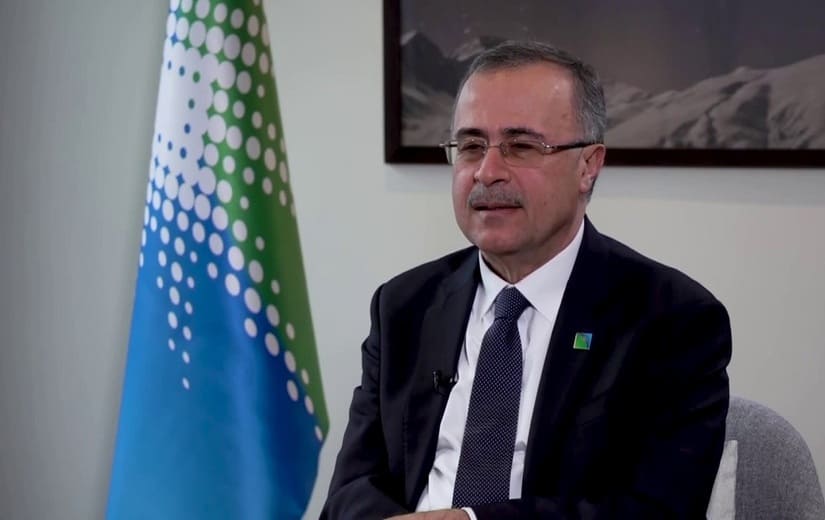The CEO of Saudi Aramco, Amin Al-Nasser, expressed his concern about the decrease in reserve capacity in the world in the medium and long term, revealing at the same time that the number of rigs in Saudi Arabia will reach 300 rigs by the end of this year (2023).
He indicated – in an interview with the American network “CNBC” – that demand is relatively low due to current market dynamics, such as the slowdown in China and the aviation sector, which is still recovering from the Corona virus pandemic.
However, Al-Nasser fears – with the change in the situation and the expected increase in demand – that the world will not have sufficient reserve energy to deal with this transformation, according to statements seen by the specialized energy platform.
Reserve capacity.. and lack of investments
Al-Nasser spoke about the state of the oil market, saying, “For crude oil, we are in a situation where there is spare capacity that helps mitigate outages.”
“However, I’m not sure about the medium to long term, because with a lack of spare capacity, we won’t have the ability to mitigate any short or long term outages like what happened with the Russia-Ukraine crisis,” he added.
Aramco pumps about 10% of the world’s crude oil supplies, and Al-Nasser said that it has a maximum capacity to pump 12 million barrels of crude per day, and is working to increase it by another million barrels per day by 2027.
However, Nasser said, “We have to worry in the medium to long term, I think there will be a problem in meeting the increased demand.”
He stressed that while Aramco is working to build additional production capacity, “I don’t think it is a sufficient investment to bring in the additional capacity that will be required to supply the market.”
He continued, “It will not mitigate the situation in which demand is growing and offsetting the decline. You need additional investment elsewhere, globally, to meet global demand.”
The growth in demand for oil.. and the decline in supplies
The latest Oil Market Report from the International Energy Agency – released on January 18 – forecasts that global oil demand will increase by 1.9 million barrels per day in 2023, to a record level of 101.7 million barrels per day, about half of which will come from China.
Meanwhile, the agency expects oil supply growth to slow to 1 million barrels per day over the same period.
The Aramco CEO predicted that oil demand would continue to grow for the rest of the decade, even as electric cars became more popular and money was invested in renewable energy.
Al-Nasser said – in previous statements to Bloomberg Agency -: “It offsets some of the demand for oil, however, the consumption of crude oil will definitely be higher in 2030.”
He noted that demand will rise strongly by 2023, as China reopens its economy and the aviation market recovers.
Al-Nasser stressed that the world needs 4 million to 6 million barrels per day of new production, just to compensate for the natural decline in the existing fields.
The following table – prepared by the specialized energy platform – shows the expectations of global oil demand and supply in 2023:
Investments required in oil and gas
In a related context, investment in the oil and gas sector decreased amid the focus on decarbonization, and government regulations in many countries discourage fossil fuel exploration.
Saudi Arabia and many of its OPEC partners have repeatedly called for simultaneous investment in hydrocarbons and the energy transition, to avoid future supply pressures.
Al-Nasser said – in his statements to “CNBC” -: “Let’s think about it this way. Today we have about two million barrels of spare capacity. The aviation industry is one million barrels less than the level before the Corona pandemic.”
And he continued, “With the aviation industry recovering in 2023-2024, that means an additional million barrels, take into account the opening up of China, and that will really add a lot to the demand side.”
He also said, “So, all of these indicators now, without a recession looming…if economies start to recover and improve, that will also require additional supply, so additional investment is needed to prepare for what’s to come.”
The number of rigs in Saudi Arabia
When asked about the number of rigs in Saudi Arabia, Amin Al-Nasser indicated that there will be 300 rigs in the Kingdom by the end of this year (2023).
He said, “We are not only drilling to maintain our capacity in gas and oil, but we are building our gas capabilities on a large scale by 2030, to replace one million barrels of liquid flaring, as well as for use in blue hydrogen.”
“So we’re building a lot of capabilities and maintaining our strength,” he added.
Nasser stressed that gas is more of an issue than oil, “because oil is a commodity that can be taken from Europe and places in Asia, Russian crude oil will always find markets at the right price.”
He continued, “But gas is a bigger problem, because gas does not have enough reserve capacity, you need LNG stations and markets, and there is not enough supply to meet demand.”

Leave a Reply